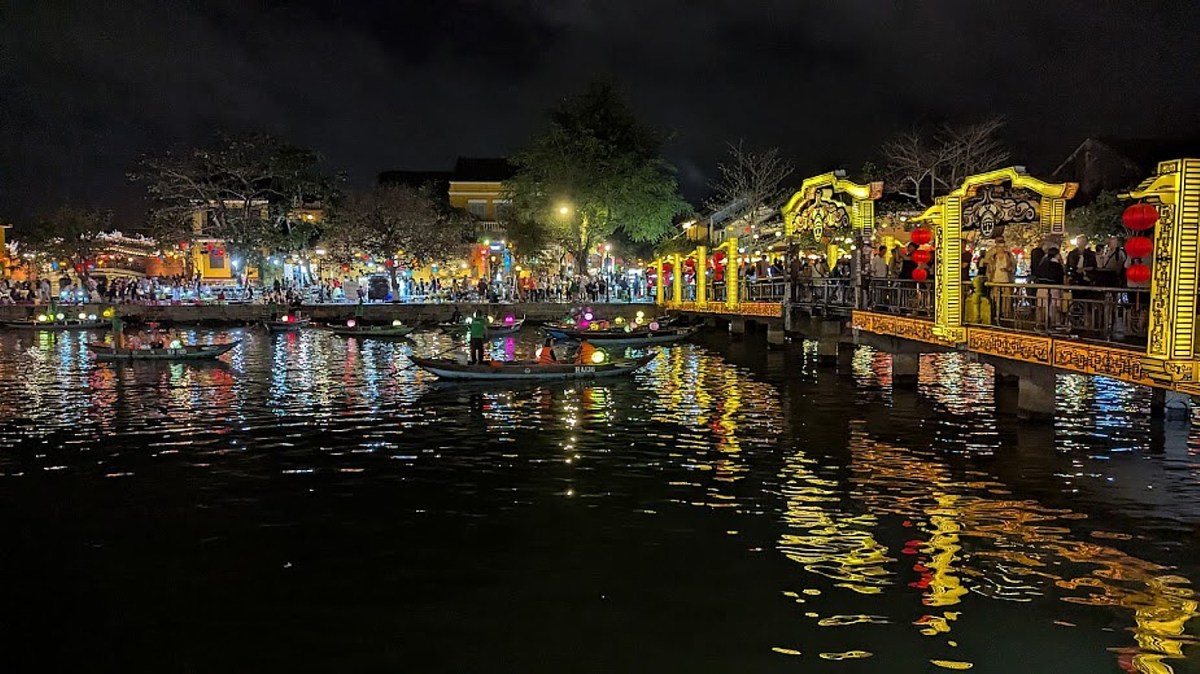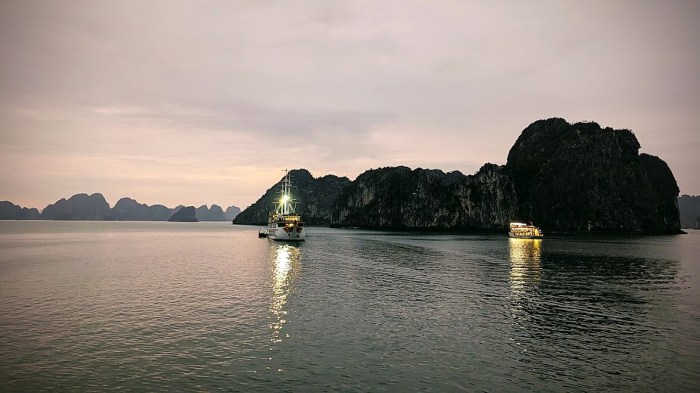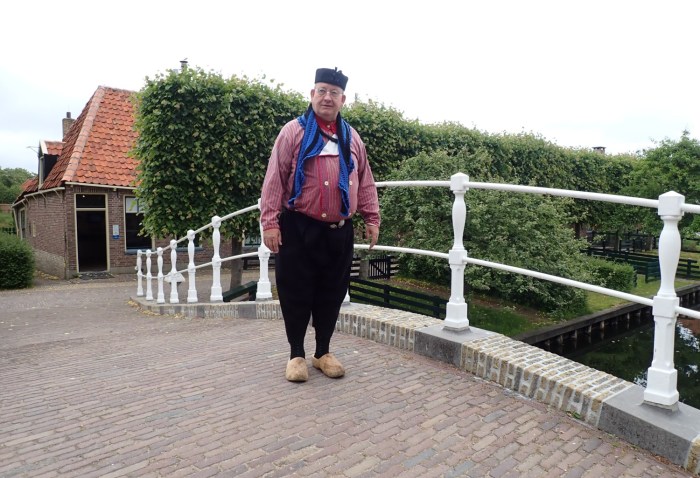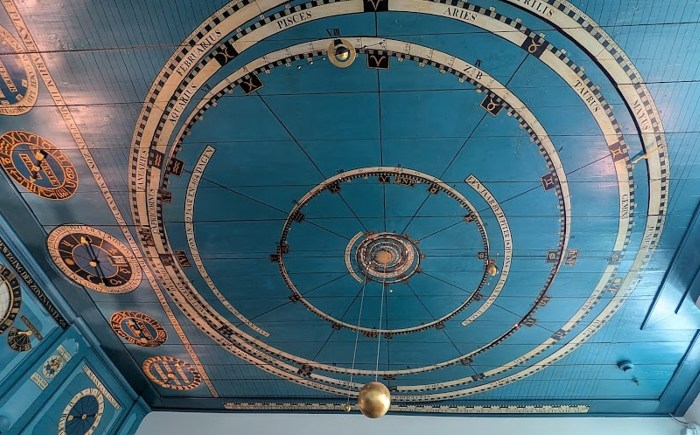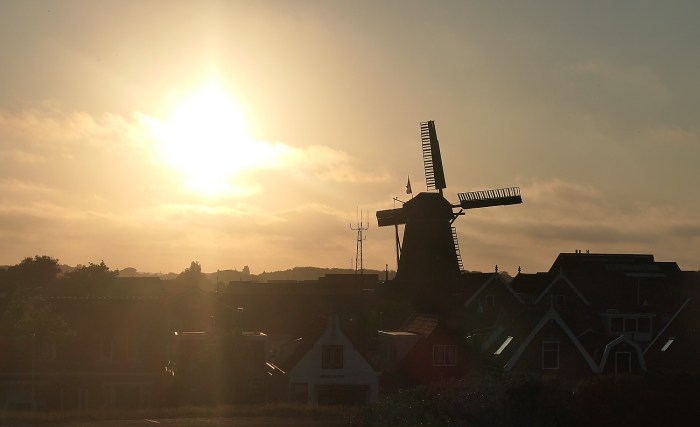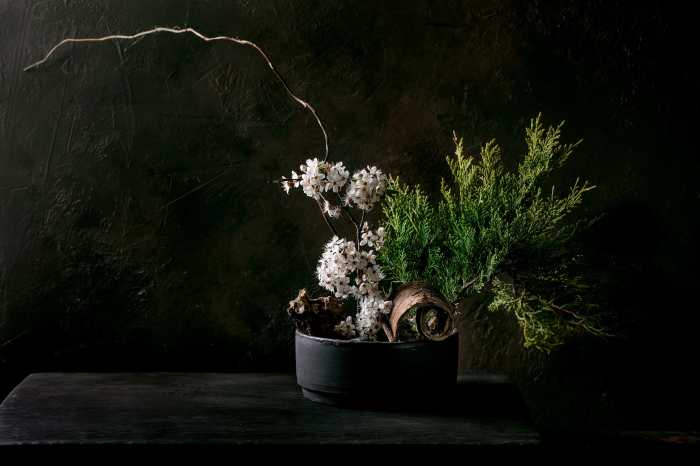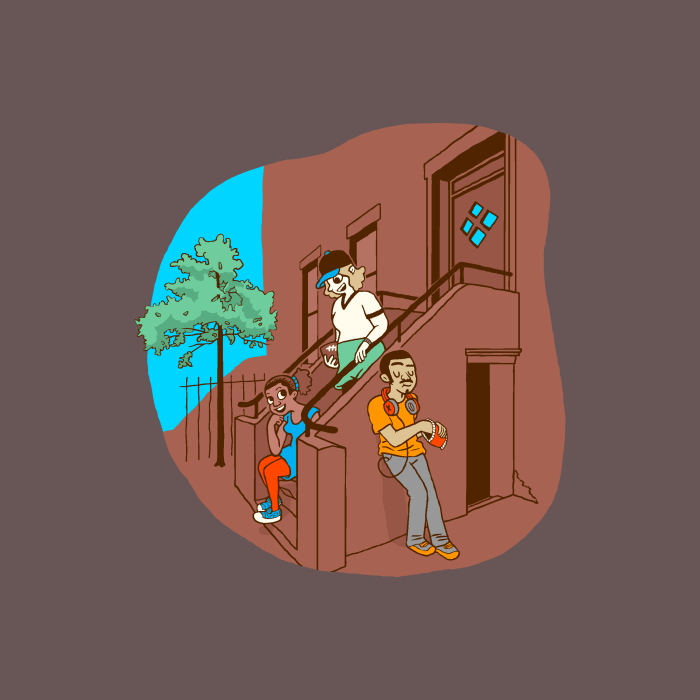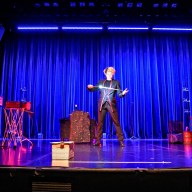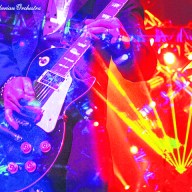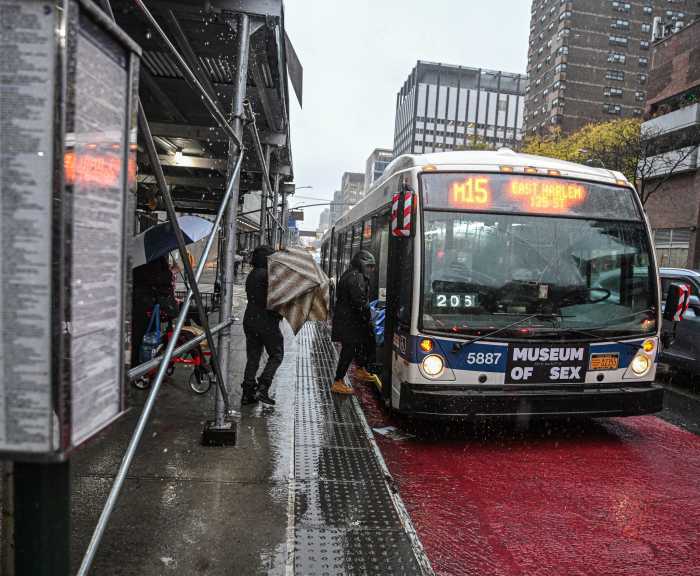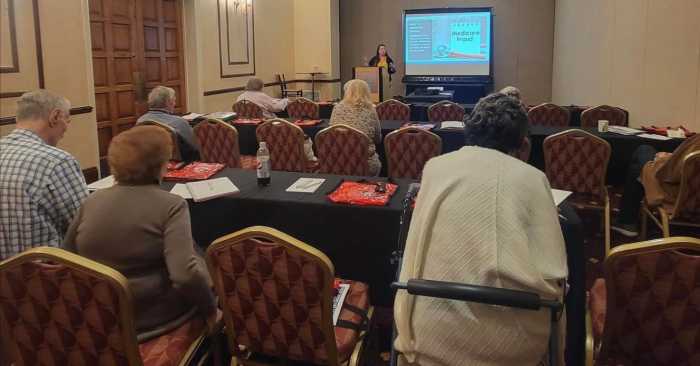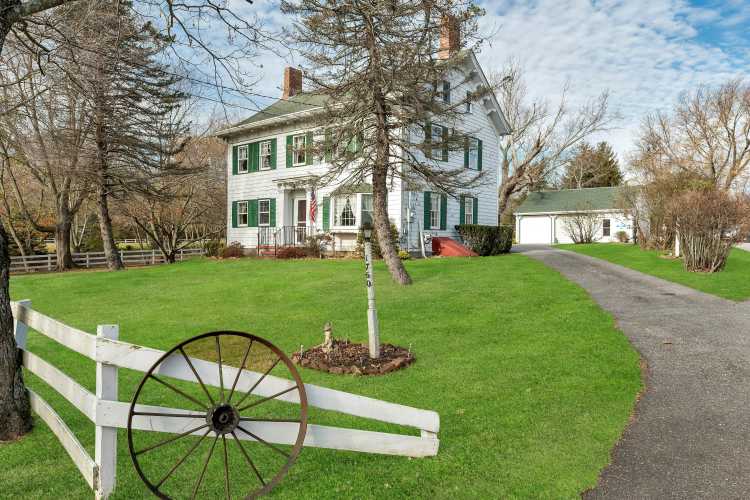By Karen Rubin, Travel Features Syndicate, goingplacesfarandnear.com
When I think of Hoi An, Vietnam, I think of “dazzling” and I think of Venice. That first glimpse in the night as we walk over the Hội An bridge into Old Town and suddenly see the colored lights and lanterns popping out of the darkness, the silhouette of the sampan boats rowing on the river evoking Venetian gondoliers, the reflections on the dappled surface of the water, takes my breath away. Add to this the crush of people crossing the bridge, reminiscent of the Ponte di Rialto (but with the added hubbub of motorbikes winding their way through the crowd). And then there is the Japanese Covered Bridge that reminds you of Venice’s Bridge of Sighs.

In the 17th and 18th centuries, Hoi An was one of the most prosperous international trading ports in Southeast Asia – the center of commerce for merchant vessels from Japan, China, Portugal, Spain, the Netherlands and India – cultures that left their mark in architecture, customs, art and festivals. Preserved intact and considered a living museum, the Old Town was recognized as a UNESCO World Cultural Heritage Site in 1999, and in 2023, was listed as one of the UNESCO creative cities for handicraft and folk arts – which we enjoy discovering in the many shops and market stalls.

Experiencing Vietnam’s Rural Life by Bike
Today’s ride – 20 miles through Hoi An’s countryside – on Day 8 of Discovery Bicycle Tours’ 12-day Vietnam cultural tour, proves my favorite – especially compared to yesterday’s challenging seven-mile ride up to the Hai Van Pass and six miles down the other side. Today’s ride is not just relaxing but really interesting, manifesting the best feature of a bike tour: bringing you into daily life. We ride through villages which represent the “five pillars” of Vietnamese daily life – a carpentry village, fishing village, vegetable village, pottery village.
After breakfast, we pedal right from the five-star European-styled Royal Hotel Hoi An to the hamlet of Thanh Ha, a modest village specializing in making small pottery objects and utensils. We learn that the clay is collected from rice paddies. Several of us get to try the traditional method, and as we leave, we are presented with a gift of a clay animal-shaped whistle.

We continue cycling through the countryside to a small village located on the banks of the Tra Que Lagoon, 2 miles northeast of the Old Town. We meet local residents and enjoy a demonstration of making rice paper, ban xeo and the tam huu local spring roll. We get to try to make it ourselves, as we are treated to tea and rice cake. Every part of the rice plant is used, including the husk which is fuel.
After lunch, we bike to Cam Thanh water coconut village to learn about the daily life of families who fish on the local river, and are paddled around in a “unique” (novel) Vietnamese round bamboo basket boat, coming close to a fishing boat to see how the fisherman tosses out an enormous net.
Back in Hoi An after our bike ride, we have the afternoon free and time to explore the delights of Hoi An.
I go off to find The Precious Heritage Museum and Art Gallery, set in a 19th century French house in Old Town.

This is so much more than the gallery of world-renowned photographer, Rehahn – it is an ethnography exhibit of his decade long project to photograph all 54 ethnic groups of Vietnam. Magnificent portraits are displayed along with that village’s traditional dress and other artifacts (several of these also decorate the hotel). Magnificent portraits are displayed along with that village’s traditional dress and other artifacts. I love his notes telling the story behind the photograph of the people and the experience. You can also watch outstanding videos. The photos are published in his book, “Vietnam.”

The five rooms spanning 500 sq meters contain hundreds of portraits, 60 costumes and tribal songs. You are immersed in his striking portraits, stories, and heirlooms that equal the best exhibitions in the finest museums in the world and stand as a celebration of heritage and a call for conservation. (Free admission, open daily 8 am-8 pm, 26 Phan Boi Chau – Hoi An 84 94 982 06 98, https://www.Rehahnphotographer.com/)
To get there (a 20 minute walk, or about a mile from the Royal Hotel Hoi An), I walk along the river, through the markets, first geared to tourists, then local markets. But I see why the city bans buses and trucks to enter the city after 4 pm, because as I walk, literally 100 stalls are being moved into position, like a long train, as the night market takes over the street. A long line of rickshaws transporting tourists flow down, and pedestrians take over whatever space is left.
Our group meets for dinner at the Morning Glory Restaurant, which I learn has basically re-invented Vietnamese cuisine after decades of deprivation:
“We had lost a whole generation of chefs and recipes. When you’re living on the most basic rations, taste is not your priority – you just need something to fill your belly and give you energy,” Ms. Vy, founder and owner of The Taste Vietnam Group writes.
“Nowadays, having been a chef for some 40 years, I can look back at our history and understand why Vietnamese cuisine doesn’t yet occupy the position it deserves on the world stage. And this is why I, and many of my colleagues, have tasked ourselves with exposing our amazing gastronomy to the world. We hope to highlight its techniques, the philosophy at its roots, and its historical origins, while at the same time promoting its health and nutritional benefits. We have dedicated our careers to this for our community and our nation.”
These remarks crystallize for me what our Discovery Bicycle Tours guides – Phong, Vinh and Li – have related to us in their personal stories. I was reminded of Phong, standing by a rice paddy, speaking of his holiday gift wish when he was a boy not be hungry, and how so much has changed for his people over the last 40 years.

Indeed, the meal we enjoy at Morning Glory is excellent, imaginative, exquisitely presented as we are entertained by two guitarists.
The restaurant is very clever, offering an entire store, Vy’s Market, filled with household and culinary items (“Herbal Wine for Joints”), as well as a cooking school.
(The next evening, when dinner is on our own, we happen into another of Vy’s restaurants on the other side of the river in the Old Town, with a fantastic saxophonist to entertain, stunning ambiance and delightful menu.)
After dinner, we stroll around on our own – we head toward the Old Town across the Hoi An bridge, and that’s when we come across the most spectacular sight: the colorful lanterns on sampan boats.
We enjoy looking into the shops and then come upon another scenic highlight of Hoi An: the Japanese Covered Bridge.
The Japanese Covered Bridge was built in the early 17th century by the Japanese who lived in Hoi An town, to cross the stream to do business with the local people in the residential area. The two entrances are guarded by Monkey Gods at one end and a pair of Dog gods at the other. In later centuries, the Chinese and Vietnamese continued to restore the bridge, and built a small temple dedicated to the God Bac de Tran Vo (Emperor of the North).This religious architectural complex has a distinctive pantiled (yin-yang) T-shaped roof, which is related to the misfortune and happiness of the local people, so they often call it Chua Cau (bridge and temple). Chua Cau is also a symbol of the cultural exchange between the Japanese, Chinese and Vietnamese people in Hoi An. It is thought to have supernatural power and is still a place of worship. Inside, we see the small temple and historic photos of the bridge.

Bike Ride to My Son Sanctuary
The morning of Day 9, we transfer to Vinh Dien where we cycle 15 miles to the My Son Sanctuary. At this World Heritage Site, see the remains of the remarkable brick towers.
Visiting My Son Sanctuary is fascinating on multiple levels – it introduces us to a part of Vietnam’s heritage that few would have known – My Son Sanctuary was the spiritual capital of the Cham Kingdom, which dominated Southeast Asia for nearly a thousand years, and is one of the few sites from this era left standing. During the Vietnam (American) War; this area was a stronghold for VietCong fighters and was bombed in 1968 during the Tet Offensive – to the extent that a letter was sent to President Nixon, pleading with him to stop bombing this precious place. Apparently, the bombing was stopped.
We learn that the sanctuary had to be excavated, but the process was impeded by landmines. “In 2000, with the help of the United States, they took out the landmines.” Also, there are snakes (so don’t walk on the grass)
Another interesting thing: they don’t really know how these temples were constructed.
The monuments are considered masterpieces of brick construction of the period, both in terms of the technology of their construction and because of their intricate carved-brick decorations, “unique and without equal in Southeast Asia,” according to UNESCO notes.
The tower temples were constructed over ten centuries in what was the heart of the ancestral homeland of the ruling Dua Clan which unified the Cham clans and established the kingdom of Champapura (Sanskrit for City of the Cham people) in 192 CE. During the 4th to 13th centuries CE this distinctive culture, on the coast of contemporary Vietnam, owed its spiritual origins to the Hinduism of the Indian sub-continent.
We get back to Hoi An with the whole afternoon and evening to ourselves.
The Precious Heritage Museum and Art Gallery is so fascinating that I return with Calista Phillips (our Discovery Bike Tours guide) and Pam and we are so fortunate that Rehahn, the photographer himself!, is at the gallery, signing his newest book.



Now we can focus on the markets – when you walk from the Royal Hotel along the riverbank, you see all the tourist-oriented shops and stalls, but walk a bit further and there you have the local markets, and just a bit further than that, is the Gallery.
We stop at a woman who is carving bamboo into the most amazing heads.


The further away from the river front and the further back from the center, the streets empty out, and we just enjoy the atmosphere as we walk back to the Royal Hotel Hoi An.

Discovery Bicycle Tours, 2520 W. Woodstock Rd., Woodstock, VT 05091, 800-257-2226, 802- 457-3553, info@discoverybicycletours.com, www.discoverybicycletours.com
Next: Ho Chi Minh City
__________________
© 2025 Travel Features Syndicate, a division of Workstyles, Inc. All rights reserved. Visit goingplacesfarandnear.com and travelwritersmagazine.com/TravelFeaturesSyndicate/. Blogging at goingplacesnearandfar.wordpress.com and moralcompasstravel.info. Visit instagram.com/going_places_far_and_near and instagram.com/bigbackpacktraveler/ Send comments or questions to FamTravLtr@aol.com. Bluesky: @newsphotosfeatures.bsky.social X: @TravelFeatures Threads: @news_and_photo_features ‘Like’ us at facebook.com/NewsPhotoFeatures




